Endovenous Laser Ablation
Endovenous Laser Ablation in Miami is a cutting-edge treatment available at Luxe Foot Surgery. Designed to address vein-related conditions with precision, our clinic in Miami utilizes advanced laser technology to ensure an efficient and minimally invasive experience. In this article, we will cover the procedure, post-operative care, cost, and everything related to this innovative approach, providing a complete understanding for those exploring this treatment option.
- Updated on: January 16, 2024
AVERAGE COST
$2,000
PROCEDURE TIME
60 – 80 Min
BACK TO WORK
1 week
FULL RECOVERY
2 weeks
Book Your Free Consultation
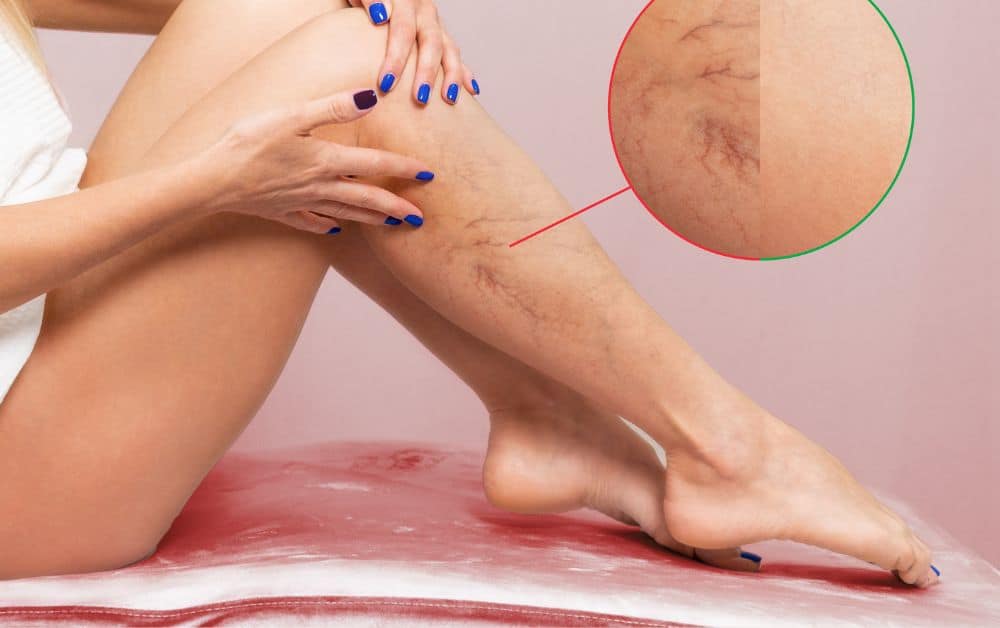
What is Endovenous Laser Ablation?
Endovenous Laser Ablation (EVLA) is a cutting-edge, minimally invasive procedure designed to treat varicose veins. Utilizing laser energy, EVLA targets the affected veins, causing them to collapse and eventually be absorbed by the body. Here’s a quick overview of what makes this technique special:
Advantages:
- Minimally Invasive: Only small incisions are needed.
- Quick Recovery: Most patients return to daily activities within a day.
- Effective: High success rate in eliminating varicose veins.
- Less Painful: Generally considered more comfortable than traditional surgery.
Procedure:
- Consultation: Physician evaluation and ultrasound mapping.
- Preparation: Local anesthesia is administered to numb the area.
- Insertion: A thin laser fiber is inserted into the problematic vein.
- Laser Application: Controlled laser energy is applied to close the vein.
- Recovery: Pressure bandage applied; walking encouraged to aid healing.
Candidates for EVLA:
- Suffering from varicose veins.
- Experience pain or swelling in the legs.
- Seek a cosmetic solution for visible veins.
- Are not pregnant or suffering from certain medical conditions.
Endovenous Laser Ablation Cost in Miami
The cost of Endovenous Laser Ablation (EVLA) in Miami typically ranges from $2,500 to $3,000. This price may vary based on factors such as the clinic’s reputation, the physician’s experience, and the complexity of the individual case.
Factors Influencing the Cost:
- Clinic Reputation: Established clinics may charge higher fees.
- Physician’s Experience: Experienced doctors might command a premium price.
- Treatment Complexity: Multiple or larger veins may increase the cost.
- Insurance Coverage: Some insurance plans might cover a portion of the cost.
Endovenous Laser Ablation Side Effects
While it’s considered to be a safe and effective treatment, like all medical procedures, it can have potential side effects. Here’s an overview of the possible side effects of EVLA:
Common Side Effects:
- Bruising: Temporary bruising around the treated area.
- Swelling: Mild swelling which usually subsides within a few days.
- Redness or Skin Discoloration: May occur at the treatment site but typically fades.
- Tingling or Numbness: Temporary sensation changes that resolve over time.
Rare Side Effects:
- Thrombosis: Formation of a blood clot in the vein.
- Infection: Though uncommon, infection can occur at the incision site.
- Burns or Skin Damage: Rare, but can result from laser exposure.
- Deep Vein Thrombosis (DVT): Extremely rare, but serious if it occurs.
Factors Influencing Side Effects:
- Operator Experience: Skilled physicians typically minimize side effects.
- Patient Health: Overall health and vein condition can influence recovery.
- Post-Procedure Care: Following post-op instructions helps reduce risks.
Endovenous Laser Ablation Recovery
Recovering from Endovenous Laser Ablation (EVLA) is typically a straightforward process, but there are certain steps and guidelines to follow to ensure a smooth healing experience.
Immediate Aftercare:
- Compression Stockings: Usually worn for a week or more to aid healing.
- Walking: Encouraged shortly after the procedure to stimulate blood flow.
- Avoid Strenuous Activities: Heavy exercise should be avoided for a few days.
First Few Days:
- Mild Pain or Discomfort: Can be managed with over-the-counter pain relievers.
- Bruising and Swelling: Likely to occur but will gradually diminish.
- Daily Activities: Most people return to work and regular activities within 1-2 days.
Weeks Following the Procedure:
- Monitoring: Follow-up appointments to ensure proper healing.
- Skin Changes: Any discoloration or hardness usually resolves within a month.
- Regular Exercise: Can usually be resumed after the first week.
Potential Issues to Watch For:
- Signs of Infection: Including redness, warmth, or unusual swelling at the incision site.
- Severe Pain or Swelling: May indicate a more serious issue and requires immediate medical attention.
Recovery times can vary based on individual health, the specific nature of the procedure, and adherence to post-procedure care instructions. It’s always best to consult with the healthcare provider performing the EVLA to get personalized recovery guidelines.
Endovenous Laser Ablation (EVLA) vs. Radiofrequency Ablation (RFA)
| Aspect | Endovenous Laser Ablation (EVLA) | Radiofrequency Ablation (RFA) |
|---|---|---|
| Technique | Uses laser energy | Uses radiofrequency waves |
| Success Rate | Over 90% | Similar to EVLA, over 90% |
| Pain/Discomfort | Mild to moderate | Often less painful |
| Recovery | 1-2 days, mild swelling/bruising | Faster, less bruising/discomfort |
| Side Effects | Temporary bruising, skin discoloration | Less skin discoloration, similar bruising/swelling |
| Costs | May vary | Comparable to EVLA |
| Aesthetic Outcomes | Effective, cosmetically pleasing | Similar to EVLA |
Frequently Asked Questions about Endovenous Ablation at Luxe Foot Surgery
At Luxe Foot Surgery, we regularly encounter a range of queries about Endovenous Ablation. To help you understand the procedure better, we have compiled responses to these frequently asked questions. Whether you have further inquiries about Endovenous Ablation or require personalized advice, we encourage you to reach out to our expert consultants through a simple phone call. For those needing a specialized assessment of their condition, we offer the convenience of scheduling a complimentary consultation via the provided link. At Luxe Foot Surgery, your vascular health is our priority, and we’re committed to offering you the highest level of care and assistance.
Pain or discomfort after Endovenous Laser Ablation (EVLA) is a common side effect but is typically mild and manageable. Here’s what you need to know:
Types of Pain:
- Mild Pain or Aching: Often felt in the treated area.
- Tingling or Numbness: Temporary sensations may occur.
Managing Pain:
- Over-the-Counter Pain Relievers: Medications like ibuprofen or acetaminophen can help.
- Compression Stockings: Wearing these can alleviate discomfort.
- Rest and Elevation: Elevating the treated leg can reduce swelling and discomfort.
- Walking: Gentle walking may reduce stiffness and promote healing.
When to Seek Medical Attention:
- Persistent or Severe Pain: If pain persists beyond a few days or becomes severe, consult with a healthcare provider.
- Signs of Complications: Excessive swelling, warmth, or redness might signal an underlying issue such as infection or blood clot, and medical attention should be sought immediately.
Pain after EVLA is typically temporary and can be managed with simple home care measures. Following the specific aftercare instructions provided by the healthcare provider can greatly aid in minimizing discomfort and supporting a smooth recovery.
After undergoing Endovenous Laser Ablation, adhering to the post-op instructions is crucial for optimal recovery and success of the procedure. Here’s a summary of general post-op instructions:
Immediately After the Procedure:
- Compression Stockings: Wear as directed, usually for a week or more.
- Walking: Engage in light walking to promote blood flow.
- Avoid Strenuous Activities: Refrain from heavy exercise for a few days.
- Elevate the Leg: Helps in reducing swelling.
First Few Days:
- Pain Management: Use over-the-counter pain relievers if necessary.
- Avoid Hot Baths/Saunas: Stick to cool showers to prevent affecting the treated vein.
- Monitor for Signs of Infection: Such as unusual swelling, warmth, or redness.
- Stay Hydrated: Drink plenty of fluids.
First Few Weeks:
- Follow-Up Appointments: Attend all scheduled appointments with your healthcare provider.
- Avoid Prolonged Sitting or Standing: Move regularly to promote healing.
- Gradual Return to Exercise: As directed by your healthcare provider.
- Skin Care: Gentle care to the treated area, avoid scrubbing.
Potential Issues to Watch For:
- Severe Pain or Swelling: Contact your healthcare provider.
- Signs of Complications: Such as fever or unusual discharge, seek medical attention.
Mild to moderate discomfort may be experienced during and after the procedure, usually manageable with over-the-counter pain relievers.
Insurance coverage for EVLA varies by provider and policy, so it is best to consult with your insurance company and healthcare provider.
Both procedures are effective in treating varicose veins, but EVLA uses laser energy, while RFA uses radiofrequency waves. RFA may have slightly less discomfort and bruising.
Though rare, risks can include blood clots, infections, burns, or deep vein thrombosis. Following post-op instructions helps minimize these risks.
Not everyone with varicose veins may be a candidate for EVLA. Consultation with a vein specialist will help determine the best treatment for your specific condition.
Latest Articles
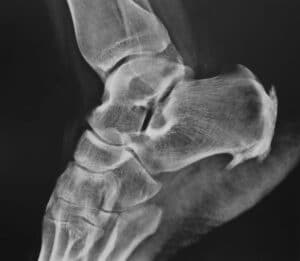
The Breakdown of Haglund’s Deformity Surgery Cost
Haglund’s deformity is a bony protrusion on the back of the heel. This podiatric condition is a result of calcaneus
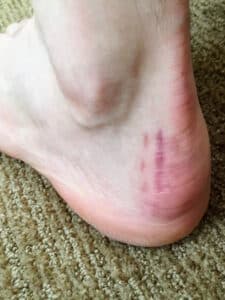
What to Expect – Haglund’s Deformity Surgery Scar
Haglund’s deformity or syndrome is a protrusion on the back of the heel caused by an enlargement of the calcaneal
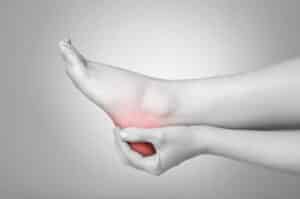
How Long Does Haglund’s Deformity Surgery Tak
Haglund’s deformity, also known as Mulholland deformity, is a bone and soft tissue abnormality on a person’s heel. It causes
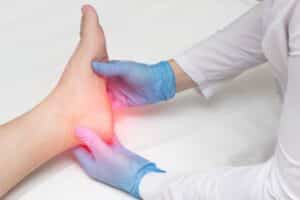
Managing Pain After Haglund’s Deformity Surgery – What to Expect and Tips for Relief
Make the recovery phase after Haglund’s deformity surgery a breeze. Learn tips and tricks for managing pain after Haglund’s deformity
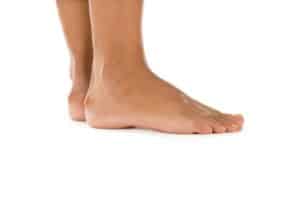
What to Expect After Haglund’s Deformity Surgery
When Haglund’s deformity proves to be resistant to all non-surgical remedies, such as changing footwear, anti-inflammatory drugs, and physiotherapy, surgical
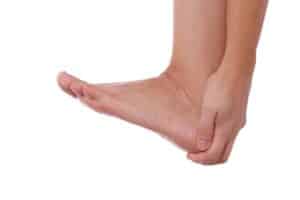
Can Haglund’s Deformity Recur After Surgery? Understanding the Possibilities
When it comes to some of the most stubborn health issues, foot conditions are at the top of the list.
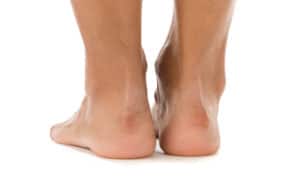
Haglund’s Deformity Post Surgery: A Comprehensive Guide
Each surgical procedure has a unique recovery period, no matter how minimally invasive it is. There will be certain things
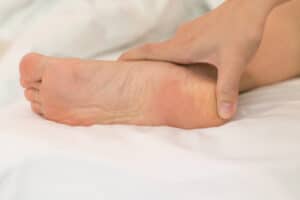
What Are the Main Haglund’s Deformity Surgery Risks? An In-Depth Overview
As with any other medical procedure, Haglund’s deformity surgery comes with its own set of risks and potential complications. Before

Returning to Running After Haglund’s Deformity Surgery – A Guided Journal
When can you return to running after Haglund’s deformity surgery? Physical therapy and a smooth recovery process impact how soon
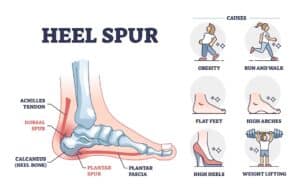
Dorsal Heel Spur Surgery – Procedure, Recovery, and What to Expect
Dorsal heel spur surgery is a procedure that alleviates irritating symptoms caused by heel spurs that develop on the back

Understanding the Costs of Laser Corn Removal
Alleviating discomfort and nagging pain caused by corns on the patient’s feet has never been easier to do. Removing painful
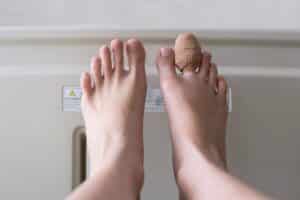
Minimally Invasive Hammertoe Surgery Cost – An Informative Guide
Do you need pain relief from a bent toe joint? Fortunately for many patients, there is a minimally invasive surgery